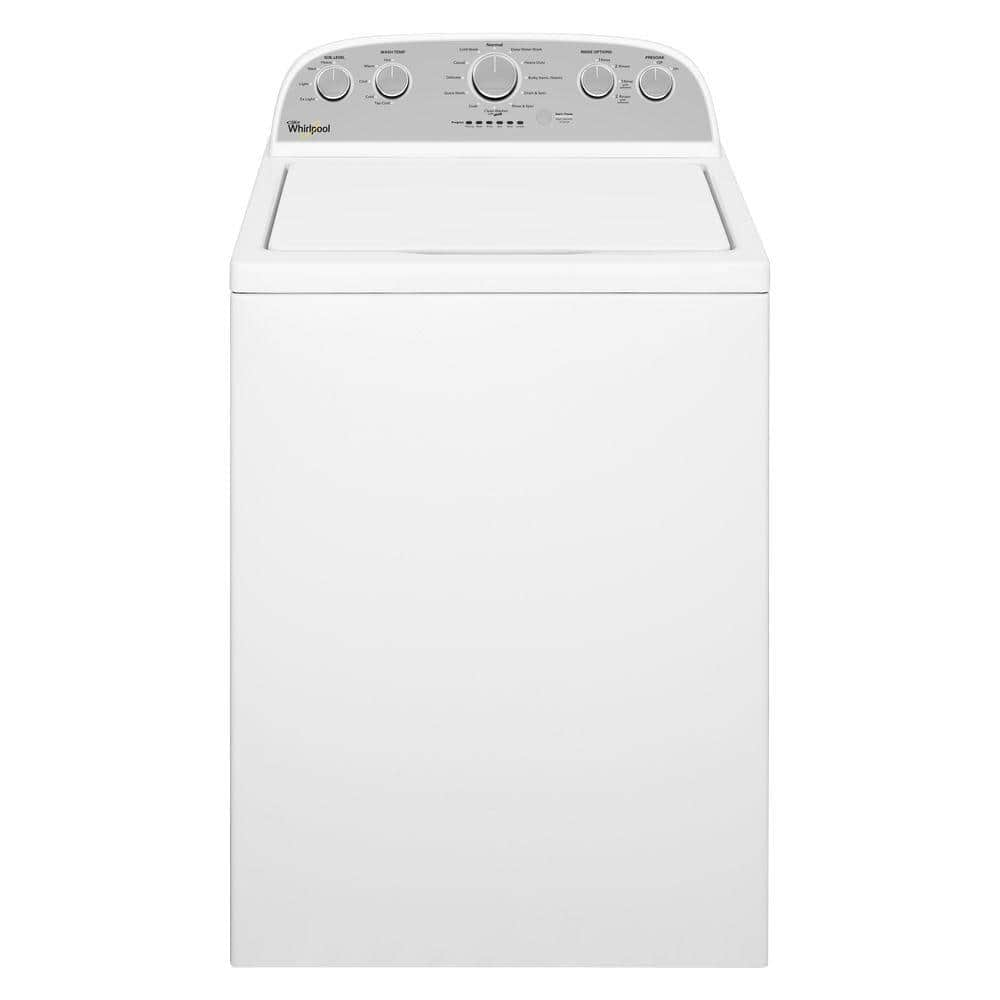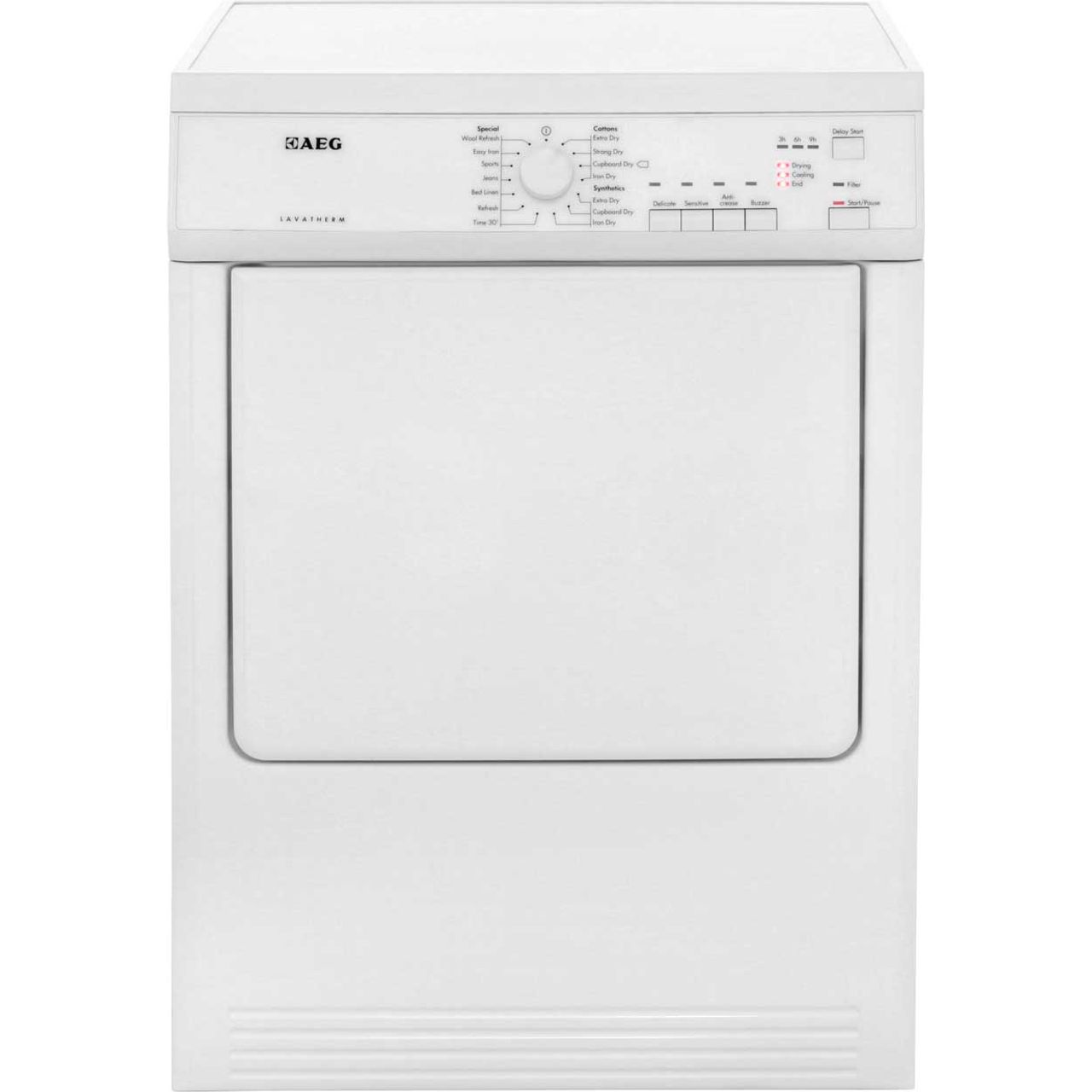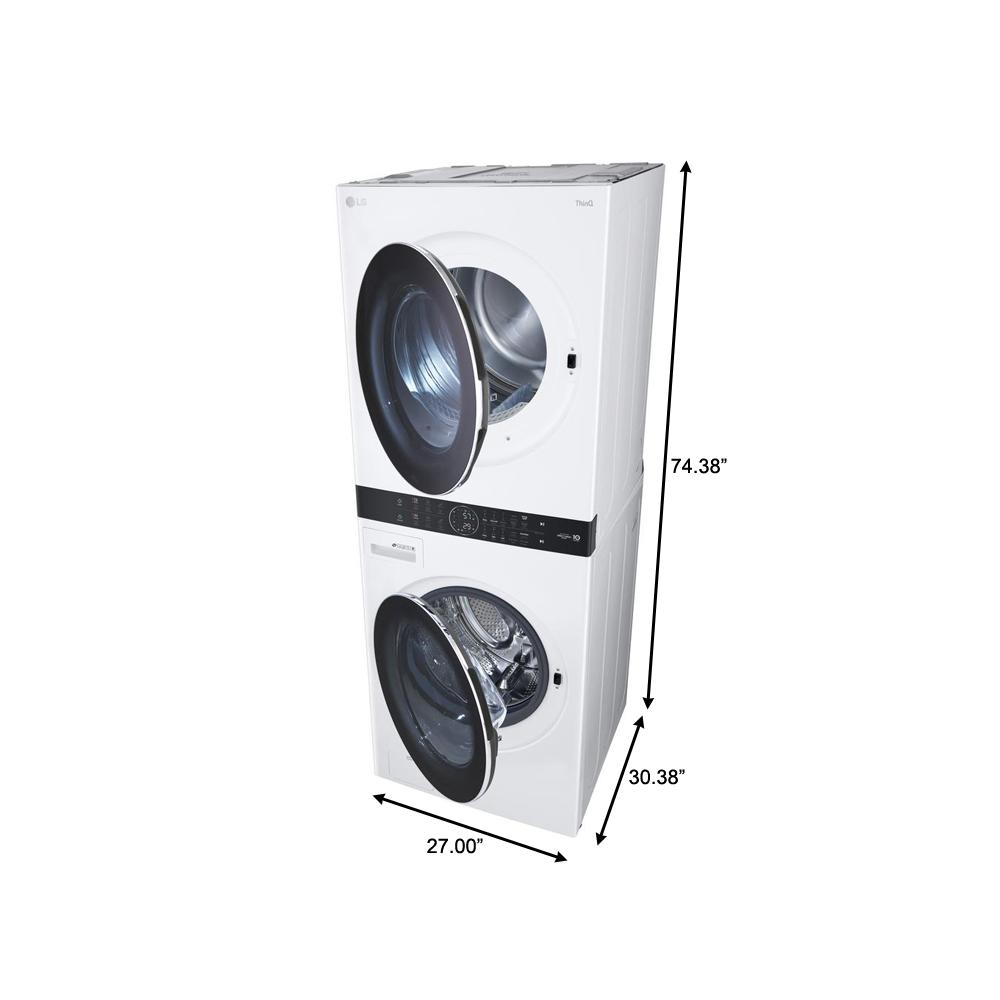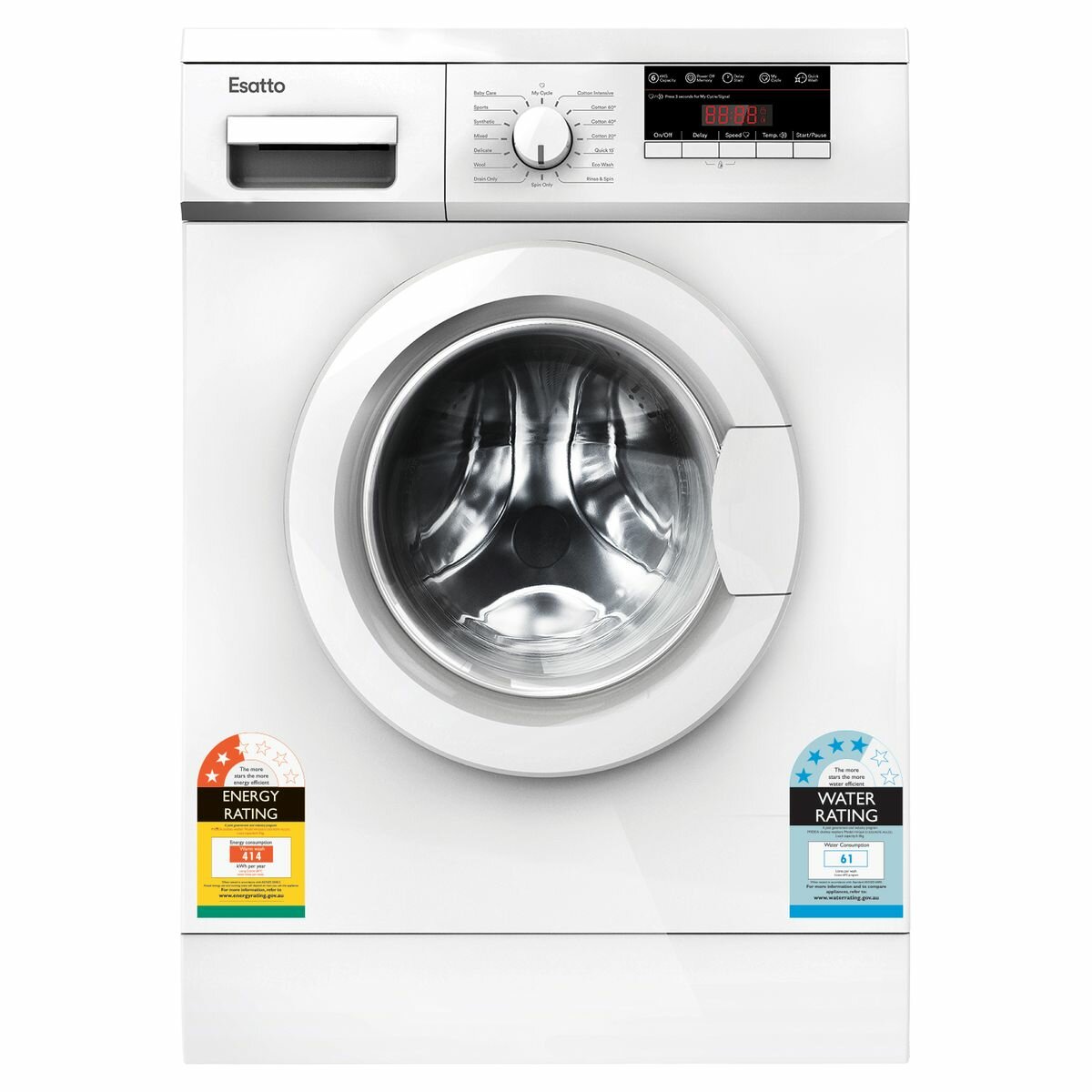Whirlpool 4.3 cu. ft. High-Efficiency White Top Load Washing Machine with Quick Wash
12 separate wash actions custom caters to each fabric detected. Pairs best with Electric WED4950HW or Gas WGD4950HW Dryer(s). Pre-soak option lets you skip soaking outside the washer.
Give clothes a deep clean and gentle care with the Whirlpool 4.3 cu. ft. top load washer. The Quick Wash cycle can wash small loads in as little as 28 minutes by using increased spin speeds. Automatic water levels regulate the amount of water in this top load washer. The low-profile impeller helps give clothes a thorough yet gentle clean. Its seamless surface and unique vanes drive clothes from the outer rim to the center of this large capacity washer’s Smooth Wave stainless steel wash basket, where the deepest cleaning happens.
- 4.3 cu. ft. capacity gives you the extra space you need for larger loads and bulky items like comforters
- The Smooth Wave stainless steel wash basket gently guides clothes and helps protect fabrics from fraying and snags
- Take on stains with the Deep Water Wash cycle which adds more water to help break down stains and improves the ability to rinse away soils
- 12 wash cycles including normal, deep water wash, heavy-duty, bulky items/sheets, drain and spin, rinse and spin, clean washer with a fresh, soak, quick wash, delicate, casual and cold wash to provide optimum care for a variety of fabric types
- Rear panel controls provide convenient access to all cycle and option selections
- Adjustable soil and water temperature settings allow you to customize wash cycles to provide the exceptional fabric care
- Automatic water levels regulate the amount of water based on the size of the load, only the amount needed to clean is used, increasing efficiency
- The unique low-profile impeller gives clothes more room for cleaning; it features a seamless surface and unique fins to drive clothes from the outer rim to the center of the wash basket, where the deepest cleaning happens
- Bulky Items/Sheets cycle easily cleans larger items like comforters, sleeping bags, down jackets or pillows
- Enjoy better cleaning with the Presoak option that lets you skip soaking outside of the washer; it works by adding extra time for it in the washer before the cycle starts, when this 10-minute option is complete, the wash cycle will start automatically
- Pre-soak option lets you skip soaking outside of the washer by adding extra time for it in the washer before the cycle starts
- Quick Wash cycle can wash small loads in as little as 28 minutes; it uses increased spin speeds to remove more water so clothes can spend less time in the dryer
- Fast spin speeds of up to 660 RPM in the washer remove moisture from clothes, so they spend less time in the dryer
- Requires the use of high-efficiency detergent
Additional information
| Capacity - Washer (cu. ft.) | 4.3 |
|---|---|
| Height With Lid Open 90 Degrees (In) | 51.52 |
| Product Depth x Height x Width (in.) | 27 x 42 x 27.5 |
| Certifications and Listings | UL Listed |
| Manufacturer Warranty | Limited 1-year |
3 (three) is a number, numeral and digit. It is the natural number following 2 and preceding 4, and is the smallest odd prime number and the only prime preceding a square number. It has religious and cultural significance in many societies.
4 (four) is a number, numeral and digit. It is the natural number following 3 and preceding 5. It is a square number, the smallest semiprime and composite number, and is considered unlucky in many East Asian cultures.
Efficiency is the often measurable ability to avoid making mistakes or wasting materials, energy, efforts, money, and time while performing a task. In a more general sense, it is the ability to do things well, successfully, and without waste.
In more mathematical or scientific terms, it signifies the level of performance that uses the least amount of inputs to achieve the highest amount of output. It often specifically comprises the capability of a specific application of effort to produce a specific outcome with a minimum amount or quantity of waste, expense, or unnecessary effort. Efficiency refers to very different inputs and outputs in different fields and industries. In 2019, the European Commission said: "Resource efficiency means using the Earth's limited resources in a sustainable manner while minimising impacts on the environment. It allows us to create more with less and to deliver greater value with less input."
Writer Deborah Stone notes that efficiency is "not a goal in itself. It is not something we want for its own sake, but rather because it helps us attain more of the things we value."
A machine is a physical system that uses power to apply forces and control movement to perform an action. The term is commonly applied to artificial devices, such as those employing engines or motors, but also to natural biological macromolecules, such as molecular machines. Machines can be driven by animals and people, by natural forces such as wind and water, and by chemical, thermal, or electrical power, and include a system of mechanisms that shape the actuator input to achieve a specific application of output forces and movement. They can also include computers and sensors that monitor performance and plan movement, often called mechanical systems.
Renaissance natural philosophers identified six simple machines which were the elementary devices that put a load into motion, and calculated the ratio of output force to input force, known today as mechanical advantage.
Modern machines are complex systems that consist of structural elements, mechanisms and control components and include interfaces for convenient use. Examples include: a wide range of vehicles, such as trains, automobiles, boats and airplanes; appliances in the home and office, including computers, building air handling and water handling systems; as well as farm machinery, machine tools and factory automation systems and robots.
Quick, as an adjective, refers to something moving with high speed.
Quick may also refer to:
Top most commonly refers to:
- Top, a basic term of orientation, distinguished from bottom, front, back, and sides
- Spinning top, a ubiquitous traditional toy
- Top (clothing), clothing designed to be worn over the torso
- Mountain top, a mountain peak located at some distance from the nearest point of higher elevation
Top may also refer to:
Washing is a method of cleaning, usually with water and soap or detergent. Regularly washing and then rinsing both body and clothing is an essential part of good hygiene and health.
Often people use soaps and detergents to assist in the emulsification of oils and dirt particles so they can be washed away. The soap can be applied directly, or with the aid of a washcloth or assisted with sponges or similar cleaning tools.
In social contexts, washing refers to the act of bathing, or washing different parts of the body, such as hands, hair, or faces. Excessive washing may damage the hair, causing dandruff, or cause rough skin/skin lesions. Some washing of the body is done ritually in religions like Christianity and Judiasm, as an act of purification.
Washing can also refer to washing objects. For example, washing of clothing or other cloth items, like bedsheets, or washing dishes or cookwear. Keeping objects clean, especially if they interact with food or the skin, can help with sanitation. Other kinds of washing focus on maintaining cleanliness and durability of objects that get dirty, such washing one's car, by lathering the exterior with car soap, or washing tools used in a dirty process.
A whirlpool is a body of rotating water produced by opposing currents or a current running into an obstacle. Small whirlpools form when a bath or a sink is draining. More powerful ones formed in seas or oceans may be called maelstroms ( MAYL-strom, -strəm). Vortex is the proper term for a whirlpool that has a downdraft.
In narrow ocean straits with fast flowing water, whirlpools are often caused by tides. Many stories tell of ships being sucked into a maelstrom, although only smaller craft are actually in danger. Smaller whirlpools appear at river rapids and can be observed downstream of artificial structures such as weirs and dams. Large cataracts, such as Niagara Falls, produce strong whirlpools.
White is the lightest color and is achromatic (having no hue). It is the color of objects such as snow, chalk, and milk, and is the opposite of black. White objects fully reflect and scatter all the visible wavelengths of light. White on television and computer screens is created by a mixture of red, blue, and green light. The color white can be given with white pigments, especially titanium dioxide.
In ancient Egypt and ancient Rome, priestesses wore white as a symbol of purity, and Romans wore white togas as symbols of citizenship. In the Middle Ages and Renaissance a white unicorn symbolized chastity, and a white lamb sacrifice and purity. It was the royal color of the kings of France as well as the flag of monachist France from 1815 to 1830, and of the monarchist movement that opposed the Bolsheviks during the Russian Civil War (1917–1922). Greek temples and Roman temples were faced with white marble, and beginning in the 18th century, with the advent of neoclassical architecture, white became the most common color of new churches, capitols, and other government buildings, especially in the United States. It was also widely used in 20th century modern architecture as a symbol of modernity and simplicity.
According to surveys in Europe and the United States, white is the color most often associated with perfection, the good, honesty, cleanliness, the beginning, the new, neutrality, and exactitude. White is an important color for almost all world religions. The pope, the head of the Roman Catholic Church, has worn white since 1566, as a symbol of purity and sacrifice. In Islam, and in the Shinto religion of Japan, it is worn by pilgrims. In Western cultures and in Japan, white is the most common color for wedding dresses, symbolizing purity and virginity. In many Asian cultures, white is also the color of mourning.
With or WITH may refer to:
- With, a preposition in English
- Carl Johannes With (1877–1923), Danish doctor and arachnologist
- With (character), a character in D. N. Angel
- With (novel), a novel by Donald Harrington
- With (album), a 2014 album by TVXQ
- With (EP), a 2021 EP by Nam Woo-hyun






by Mike
I wasn’t sure about an impeller washing machine but this thing does great! Very quite too!
by Jack
so far so good only one month in use.
by Karine
Machine is nice and easy to use. No bells and whistles. Not a SMART machine, this is a compliment. Only problem doesn’t drain water enough in spin cycle. More work for the dryer. It has not complained yet. So we are good.
by Luke
Got this matching set and it’s exactly what I was looking, great for the budget and does exactly what I need without any other crazy bells and whistle‘s and over the top buttons. Sturdy!
by Chelle
I love the impeller, gives me so much more room. Use HE detergent (like the instructions tell you to) and you’ll be fine. The panel with the knobs is silver, not blue, peel the plastic off. Wish it had a softener compartment, but no biggie.